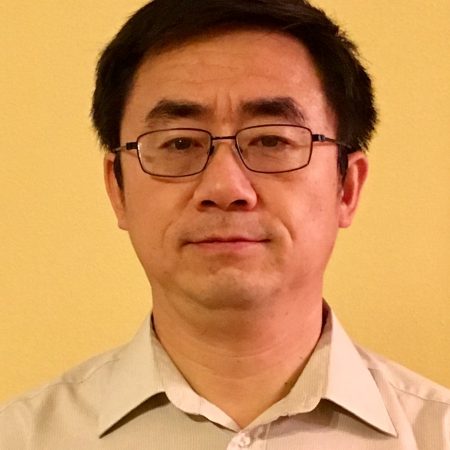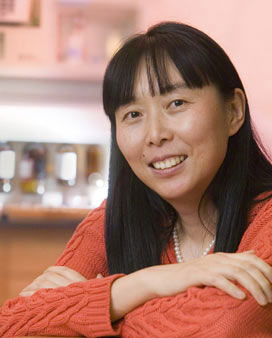
A team of Florida State University researchers is using mathematical modeling to find the best and most effective chemotherapy treatments for cancer patients.
Associate Professor of Statistics Jinfeng Zhang, his former graduate student Kaixian Yu and Professor of Chemistry and Biochemistry Qing-Xiang “Amy” Sang have developed statistical models that rank chemotherapy treatment options for patients based on the gene expression profile of the tumor. Their rankings take into account not only effectiveness at beating back the cancer, but also how sick a given drug could make the patient.
Their research was published in the journal Scientific Reports.
“Cancer patients have more options today than 10 years ago,” Zhang said. “However, given the relatively short window of opportunity for treating cancer, it is important to figure out how patients would respond to the different treatments available to them. We tackled the problem with a precision medicine approach by using the genomic information of patients’ tumor cells to understand how patients will respond to the treatments.”
Cancer treatment can be exceptionally tricky. Chemotherapy, while often the best choice for treatment, is still toxic and has painful side effects.
Oncologists typically base cancer treatments on the stage of a tumor and other pieces of clinical information. Zhang and Sang’s technology will allow doctors to take a sample of a tumor and do a gene expression profile of that tumor. Then, with that information from the profile, the mathematical model works to rank the treatments, which could be either a single drug or a combination of drugs.

“In the past, products were developed to predict if a patient needs chemo and the survival rate,” Sang said. “But those test kits don’t tell patients which one is the best for them. This is more precise. It’s filling a gap in the scientific knowledge and filling an unmet need.”
To develop this technology, Yu, Sang and Zhang analyzed records from 1,079 breast cancer patients who were treated with commonly used chemotherapies — anthracycline, anthracycline plus paclitaxel and anthracycline plus docetaxel. They then developed forecast models using genetic and clinical variables to predict the patient’s response to each of the drug combinations.
In real life, these patients had about an overall 20 percent complete response rate to their treatment. Under their model, Yu, Sang and Zhang predicted the number would rise to 33 percent or 49 percent for some subtypes of breast cancer. The researchers also found that 11 percent of patients were over treated.
Researchers hope to run clinical trials using this modeling system in the future to further investigate this technique.
“This could be a big improvement for patients,” Sang said. “If we can optimize the treatment regimen for each individual patient, many more lives can be saved.”
Added Zhang: “We hope we can perform more scientific research and develop more technologies to help cancer patients to survive and live better quality of life.”
Other researchers on the paper include FSU statistics graduate student Pei-Yau Lung; chemistry and biochemistry graduate student Mayassa Bou-Dargham; former biochemistry undergraduate students Ty Lively and Cedric Sheffield; Dr. Winston Tan from the Mayo Clinic; and Harvard University Professor Jun Liu.
The work was partially funded by a Florida State University GAP grant, an internal FSU program that funds projects that have promising potential for commercial application.




